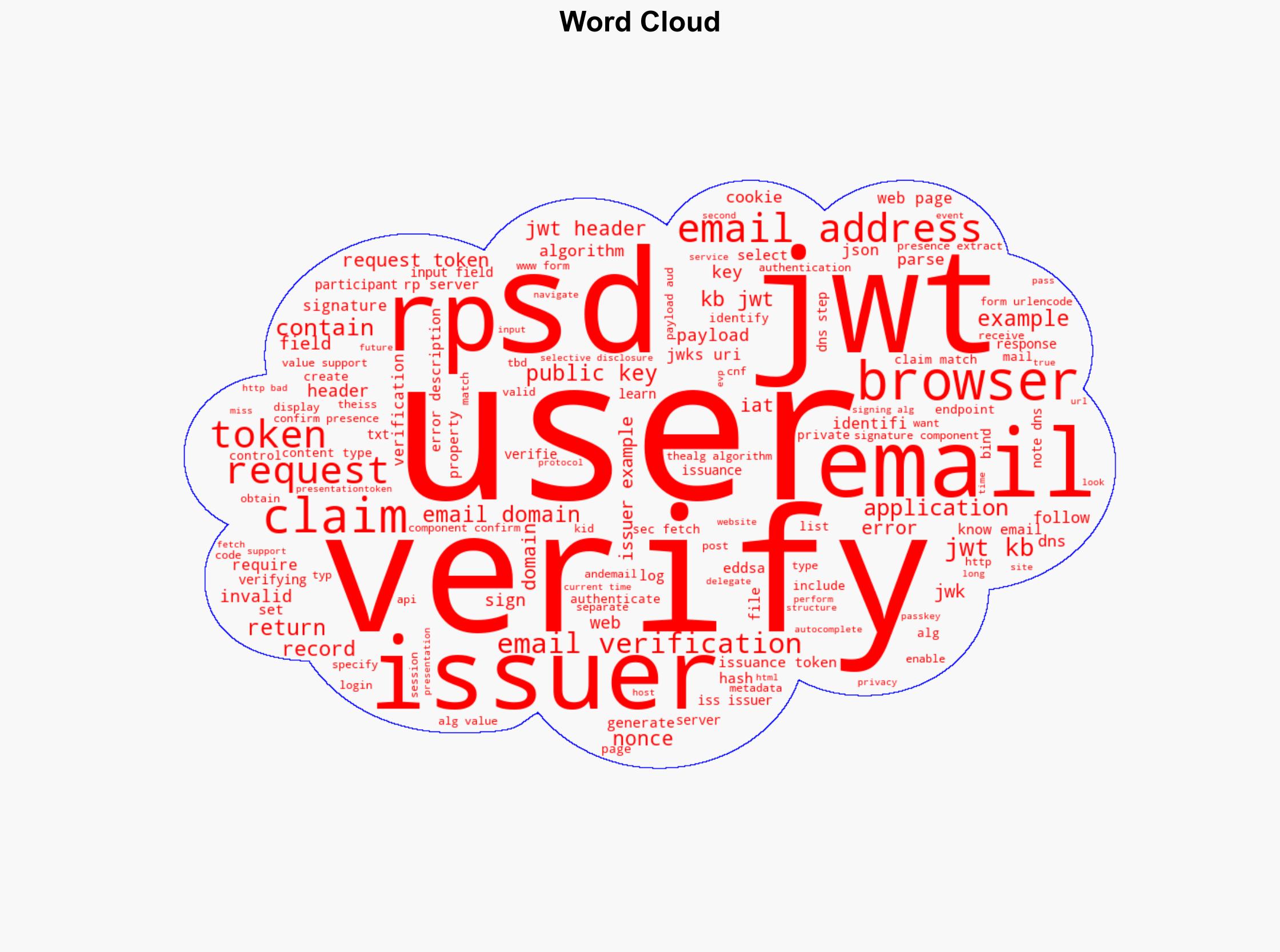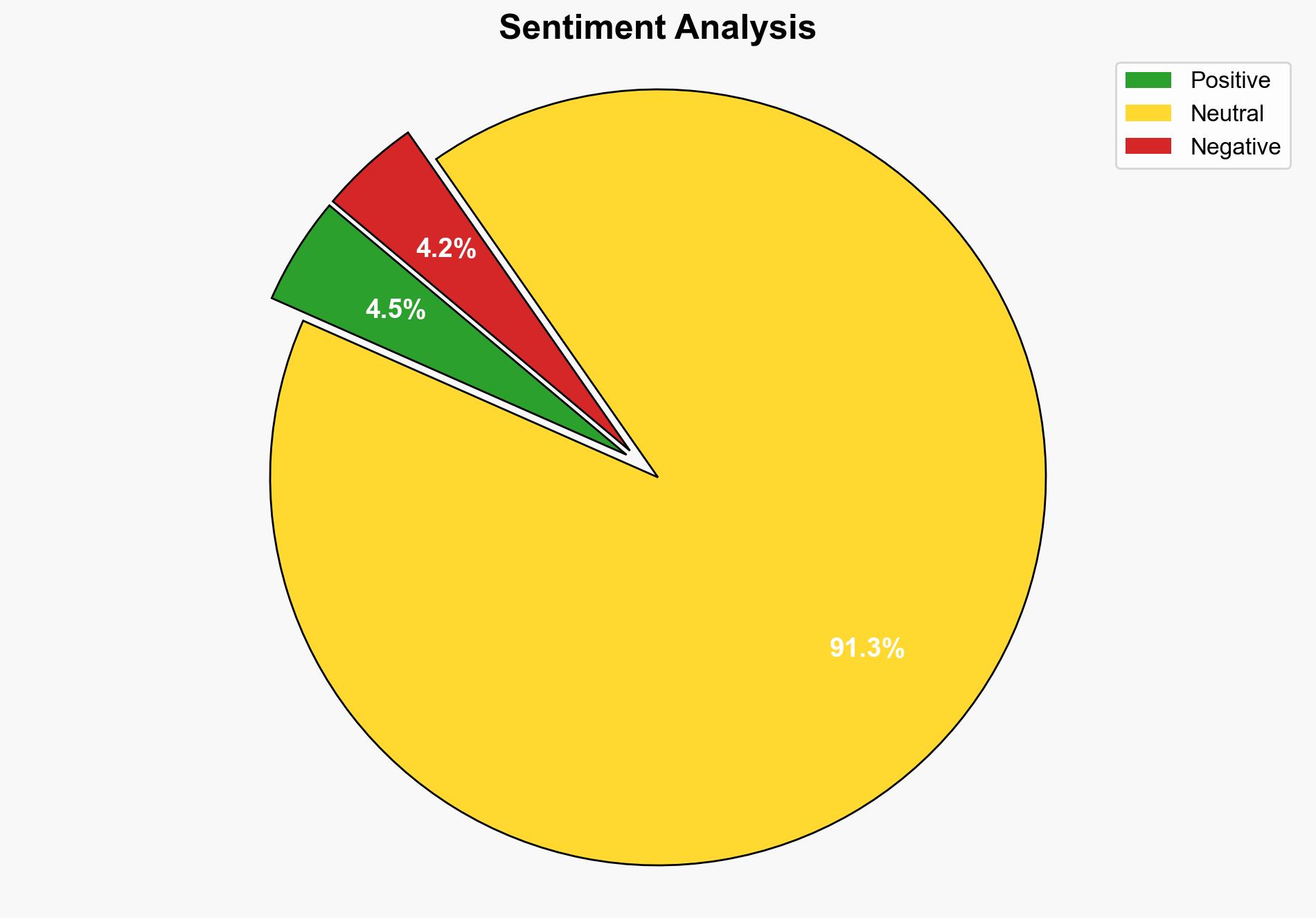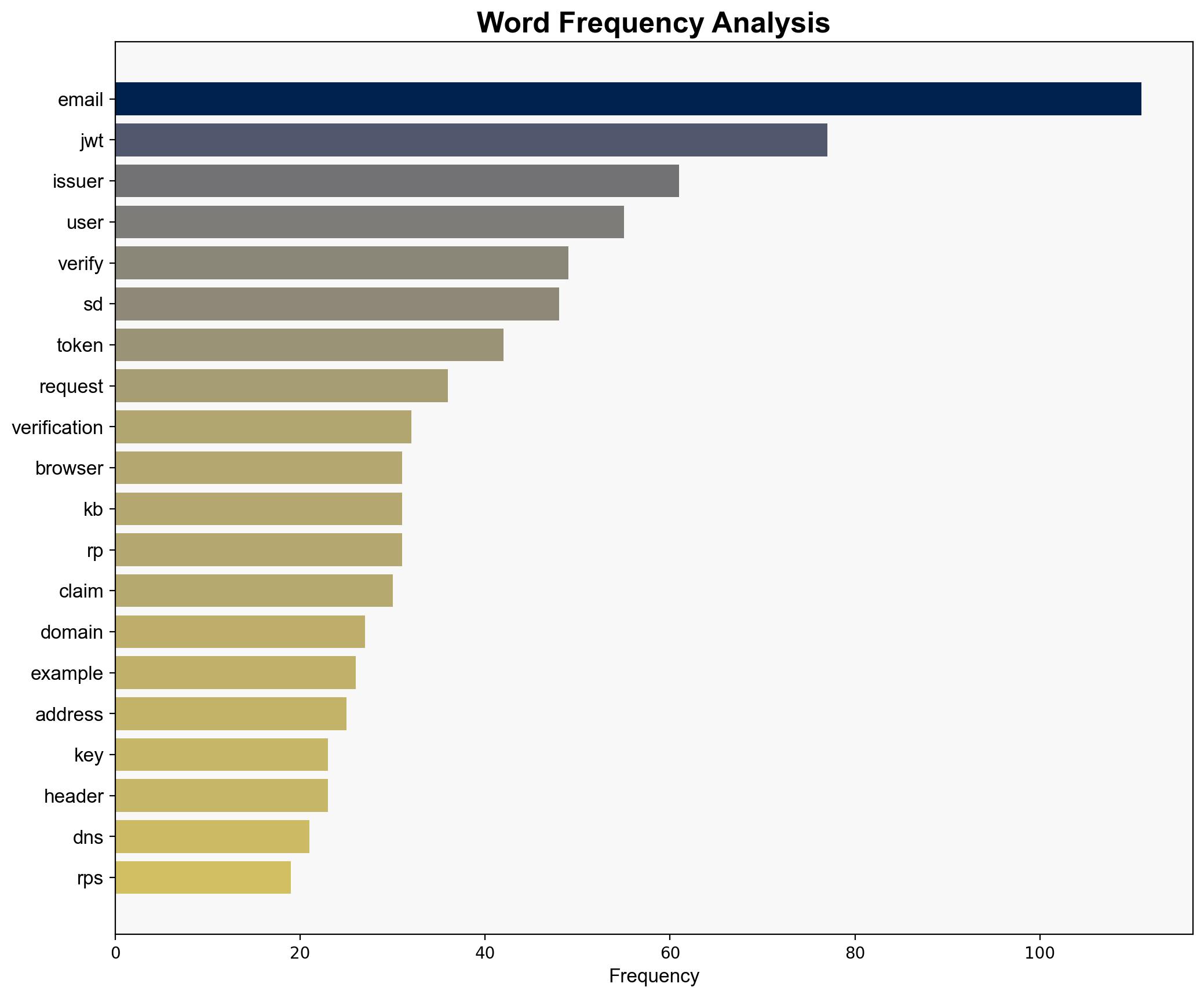GitHub – WICGemail-verification-protocol verified autofill – Github.com
Published on: 2025-11-11
AI-powered OSINT brief from verified open sources. Automated NLP signal extraction with human verification. See our Methodology and Why WorldWideWatchers.
Intelligence Report: GitHub – WICGemail-verification-protocol verified autofill – Github.com
1. BLUF (Bottom Line Up Front)
The most supported hypothesis is that the WICG email verification protocol aims to enhance user privacy and streamline email verification processes for web applications. This protocol could significantly reduce user friction and improve security by leveraging selective disclosure JWTs. Confidence Level: Moderate. Recommended action includes monitoring the adoption of this protocol and assessing its impact on user privacy and security practices.
2. Competing Hypotheses
Hypothesis 1: The WICG email verification protocol is primarily designed to enhance user privacy and streamline email verification processes by reducing user friction and improving security.
Hypothesis 2: The protocol is a strategic move to increase dependency on specific social login providers (e.g., Apple, Google) and could potentially centralize control over user data.
Hypothesis 1 is more likely due to the emphasis on privacy enhancement and the technical details provided about selective disclosure JWTs, which suggest a focus on minimizing data exposure.
3. Key Assumptions and Red Flags
Assumptions: The protocol will be widely adopted by web applications, and users will prefer this method over traditional email verification.
Red Flags: Potential over-reliance on specific social login providers could lead to centralization of user data control. Lack of clarity on how the protocol handles data breaches or unauthorized access.
4. Implications and Strategic Risks
The protocol could lead to a shift in how email verification is handled across the web, potentially reducing phishing risks and improving user experience. However, if the protocol increases reliance on major tech companies, it could lead to centralization of user data control, raising privacy concerns. Additionally, the technical complexity of implementing selective disclosure JWTs may pose challenges for smaller developers.
5. Recommendations and Outlook
- Monitor the adoption rate of the protocol and its impact on user privacy and security.
- Encourage transparency in how user data is handled and shared with social login providers.
- Best-case scenario: Widespread adoption leads to enhanced privacy and reduced phishing risks.
- Worst-case scenario: Centralization of user data control by major tech companies, leading to privacy erosion.
- Most-likely scenario: Gradual adoption with mixed results in privacy enhancement and user experience improvement.
6. Key Individuals and Entities
No specific individuals are mentioned in the source text. Key entities include web application developers, social login providers (Apple, Google), and the WICG (Web Incubator Community Group).
7. Thematic Tags
Cybersecurity, Privacy, Web Development, User Experience
Structured Analytic Techniques Applied
- Adversarial Threat Simulation: Model and simulate actions of cyber adversaries to anticipate vulnerabilities and improve resilience.
- Indicators Development: Detect and monitor behavioral or technical anomalies across systems for early threat detection.
- Bayesian Scenario Modeling: Quantify uncertainty and predict cyberattack pathways using probabilistic inference.
Explore more:
Cybersecurity Briefs ·
Daily Summary ·
Methodology





